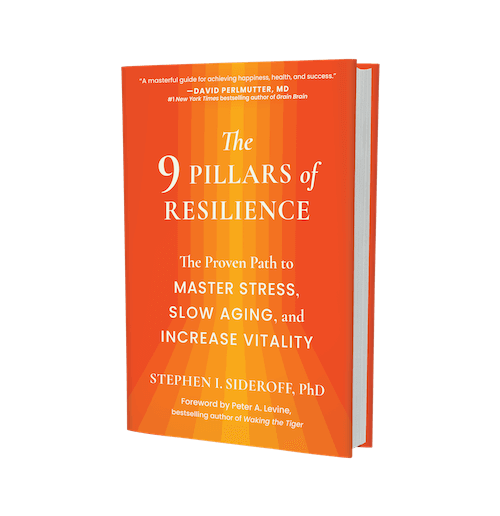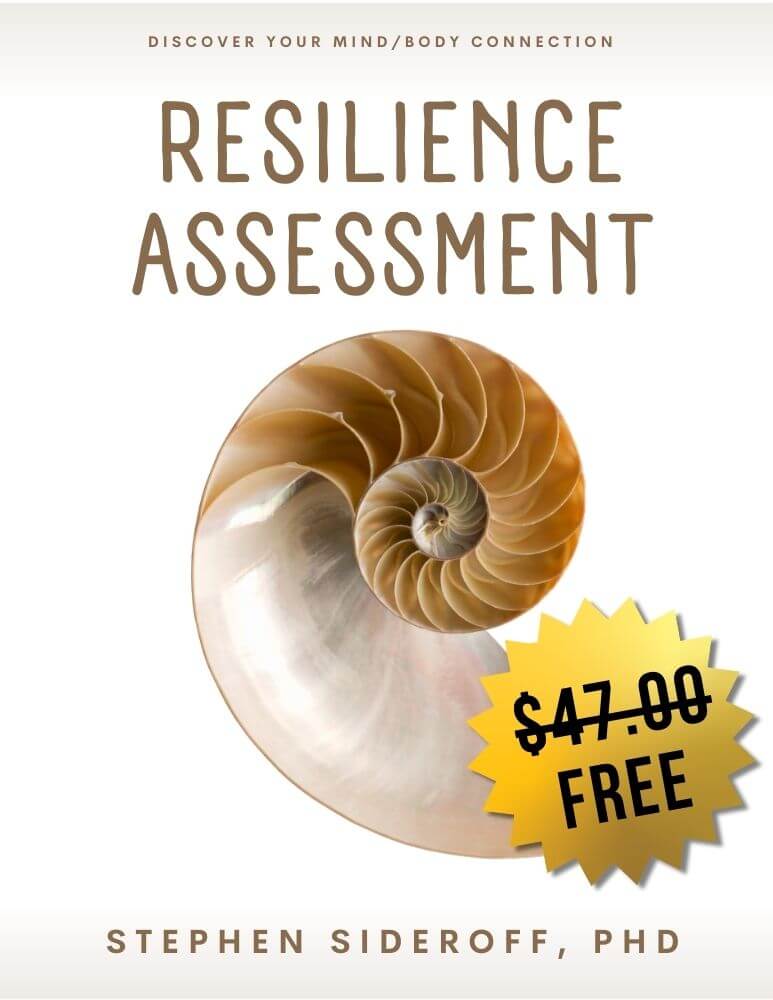The perpetual questions I hear my clients struggle with are: how do I change? And why is change so difficult? These questions actually give us the clue: wanting to “change” implies dissatisfaction with and judgment of ourselves – who we are or where we are in life. When we start with this sense that we must “change” – that we need to be different than we are – we are basically telling ourselves we are not OK. Deep down, this leads to feelings of not deserving. Thus, change becomes – if not impossible – at least very difficult. When we do make positive efforts, they feel like they are occurring “on top of” the parts of us that are not OK. It’s as though we are building a structure on a faulty foundation: it all feels shaky! As Jon Kabat-Zinn says, “Wherever you go, there you are.”
This awareness leads to two important insights: 1) to support ourselves, we must begin by finding a way to accept ourselves and where we are now in life, blemishes and all and 2) we need to move away from the need for “change” and shift instead to a goal of healing and growth or development. This article will detail this process.
Paradoxical Theory of Change
The most difficult part of becoming what you want to become is recognizing that the first step is accepting where you are now. Most of us feel that where we are now is not good enough – and, in fact, not OK. “I should have known better.” “I should be more disciplined.” “What I did was stupid.” All these statements are a reflection of our difficulty accepting where we are and of our tendency to make negative self-judgments.
Gestalt therapist Arnold Beisser, M.D., called this “the paradoxical theory of change.” Briefly, it addresses the individual’s conflict between what he “should be” and what he thinks he “is.” I like to say that the laws of physics determine that you cannot be in two places at the same time (although quantum physics might have something to say about this). You might feel like you “should be” better or even want to be someplace other than where you are. However, it is impossible to be anywhere except where you are. Once you realize this, fully accepting yourself becomes more compelling.
The Path
If you think of your progress in life as a journey along a path, at any moment you can place yourself somewhere on that path. Whatever method you use to measure your progress, you can point to the place you are in this growth process (along The Path) right in this moment.
However, most of us believe we should be further along. And therefore, the stage we are in is an indication of some shortcoming, a sign that, in some way, we are not OK. If we were OK, we would be where we feel we “should” be.
Visualize these two spots along the path for yourself: where you are and where you believe you should be. For example, you might think you should have a better memory or make fewer mistakes. Perhaps you think you should be more accomplished in your field or be a better lover. In fact, it’s impossible to be at this second location. Why? As I noted, you can’t be in two places at the same time. If you are here at the first place, you can’t simultaneously be at the second location.
Holding on to this notion of where you should be only undermines your belief and trust in yourself. It tells you that you are at fault for not being where you should be. This serves to undermine your confidence and belief that you have the capability to move down the path. Thus, the fastest way to get to where you believe you should be is to first accept where you are.
Many people resist this. They may believe acceptance means you are OK with what you determine is slow progress, or with being less competent than you would like. Acceptance might suggest that you are complacent and don’t have the motivation to get to where you want to be. Or it might just be too distasteful to accept yourself with all your blemishes.
I’m not suggesting you want to stay where you are or that you like where you are. Acceptance simply means accepting reality: “right at this moment, this is where I am.” It doesn’t mean you like it or want to stay here; it’s only a reflection of reality and this moment in time. By not beating yourself up, you have greater ability to grow, learn and become more.
Acceptance helps you be present – a primary ingredient to growth
I can convey this in a different way. Presence is one of my nine pillars of resilience and success. If you are not present in this moment – if you are in your head, thinking or worrying about something – you will be more susceptible to your old automatic and destructive patterns. The more you are not OK with who you are, the more difficult it is to look at yourself. I don’t mean this literally – although if your judgments are about your looks, this can be the case – but not being OK with yourself makes it more difficult to look at how you behave and act in the world. In other words, it’s more difficult to be present. You are more easily distracted. The result is that you won’t notice old behaviors and patterns. That means they won’t be available for alteration and growth.
Shifting your goal from change to healing and growth
To complete the shift in goals from change to growth, it’s important to set a goal that is achievable. If change implies negative self-judgments that interfere with the process, then healing and growth describe a more natural process. This process is described by a continuum, where you can take small steps and measure them. This is much more doable and leads to a steady process of development. What small steps of growth can you set for yourself?
Take the self-acceptance challenge
Rather than take my word for this important process, I want to offer you a challenge. This challenge will show you that self-acceptance is the grease that speeds your growth.
The challenge? Act “as if” you are completely accepting of yourself for 30 days. See for yourself the difference this can make. If you are not satisfied after 30 days, you can go back to your old, self-critical ways.
The challenge is for you to start each day for the next 30 days with a self-statement or “affirmation.” Make up your own, but it should go something like this: “At this moment I am fully and completely accepting of myself and love myself” (let’s go all the way with this). When you say this to yourself, picture yourself and be totally accepting. In other words, be your own best friend. In that morning meditation, set your intention to follow this mantra for the entire day (to be repeated each of the next 29 days).
When you are about to tackle something difficult, remind yourself that you are OK and that – no matter what happens, even if you make a mistake – you are OK. In fact, mistakes are inevitable parts of the process of growth. Repeat your mantra at the end of the day before going to bed.
If you take my challenge, I’d love to hear the results of your experience. Good Luck
Dr. Stephen Sideroff, resilience, addiction and peak performance expert, is the author of The Path: Mastering the 9 Pillars of Resilience and Success. To learn more about Dr. Sideroff and his work, along with his programs and products and to take the free Resilience Challenge go to www.drstephensideroff.com.


